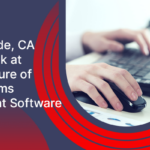How Claim Management Companies Can Enhance Their Practices
October 18, 2024
Technology has a significant impact on the insurance industry’s landscape. Insurance claims software is one of the industry’s most influential technology advances. This smart tool has the potential to transform the sector by streamlining operations and safeguarding against fraudulent activity.
However, insurance claims software, like any other technology, can be viewed in several ways, such as a superhero or cunning troublemaker.
In this investigation, we will delve into the complexities of insurance claims software, discovering its superheroic potential while also emphasizing the issues it may present.
Understanding Insurance Claims Software
Insurance claims software is a digital solution that helps insurance companies manage and simplify the entire claims process. The software acts as a central hub from the moment a claim is started until its resolution. It directs various tasks and ensures a seamless workflow.
Key Features
Automation:
- Data input and document processing are two repetitive and time-consuming operations that insurance claims software automates.
- The software finds patterns and automates repetitive tasks using advanced algorithms and machine learning, which lessens the need for human resources
- Automation speeds up the claims processing process, which increases client satisfaction and leads to quicker settlements.
Data Analytics:
- The software uses data analytics to extract valuable insights from vast datasets.
- By scrutinizing past claims data, the software detects trends, patterns, and potential fraud indicators.
- Data analytics enables insurance companies to make informed decisions, streamline their operations, and detect any abnormalities that may suggest fraudulent activities.
Integration with External Systems:
- Insurance claims software integrates smoothly with other systems, including customer relationship management (CRM) and underwriting platforms.
- Application programming interfaces (APIs) provide for easy data flow between software applications.
- Integration improves collaboration and ensures a holistic view of customer information, improving overall operational efficiency.
The How: Unveiling Superheroic Feats
Fraud Detection and Prevention:
- Advanced algorithms in insurance claims software identify massive volumes of data to detect patterns indicative of fraudulent activities.
- Fraudulent claims constitute a substantial threat to the insurance business, causing financial losses and higher rates. By detecting and preventing fraud, the program functions like a superhero, protecting insurance firms’ financial health.
Speedy Claim Processing:
- The automation of manual processes greatly reduces the time necessary to process claims.
- Speedy claim processing is a superhuman feat that helps insurers stay competitive while satisfying clients. It guarantees that policyholders receive timely payments and lowers administrative costs.
Enhanced Customer Experience:
- The insurance claims software offers a consolidated communication platform, allowing for real-time information and transparency throughout the claims process.
- Improved customer experience is a superheroic trait that promotes client loyalty and favorable brand perception. Insurance claims software helps to develop trust and long-term connections by providing a streamlined and transparent claims process.
Accuracy and Error Reduction:
- Automation reduces the risk of human errors in data entry and processing.
- The accuracy of claims processing is crucial for both insurers and policyholders. By reducing errors, insurance claims software ensures that claims are adjudicated correctly, preventing disputes and legal complications.
Navigating Potential Trouble
While insurance claims software possesses superhuman attributes, there are possible issues that could cast a pall over its otherwise spotless status.
Over-Reliance on Technology:
- Overreliance on technology may result in a divide between insurers and policyholders. Personalized attention and understanding in claims handling can be jeopardized.
- It is crucial to strike a balance between automation and the human touch. The software should supplement, rather than replace, the human element in the claims process.
Cybersecurity Concerns:
- Claims Processing software, which handles sensitive personal and financial information, is a possible target for cyber-attacks.
- Strong cybersecurity measures, like encryption, frequent audits, and employee training, are critical for preventing data breaches and unauthorized access.
Integration Challenges:
- Integrating claims software into current systems can be complicated and time-consuming.
- Using standardized APIs, working with knowledgeable IT specialists, and carefully preparing ahead can all assist in minimizing integration problems and guaranteeing a seamless transition.
Ethical Dilemmas in Automated Decision-Making:
- There are ethical questions when algorithms are used to process claims because automated choices cannot have the same empathy and nuance as human judgment.
- Ethical guidelines and supervision systems can be implemented to ensure that automated judgments adhere to ethical norms and regulatory needs.
Conclusion
Claims processing software is an essential tool in the ongoing digital transformation of the insurance industry. It can streamline procedures, increase productivity, and prevent fraud.
However, its use can lead to over-reliance on technology, cybersecurity concerns, integration issues, and ethical problems. To minimize these risks, careful consideration and sensible strategies are necessary. Proper development, use, and management of this software can make it a positive force in the insurance industry.
7 Features Every Online Claim Management System Needs
June 27, 2024What to Look for in Claims Management Software?
May 8, 2024









